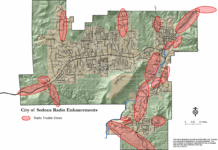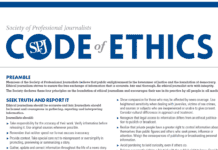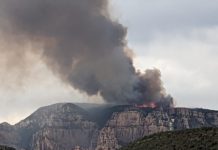Arizonans should not take potassium iodide as a precautionary measure
The devastating 9.0-magnitude earthquake and tsunami that last week triggered a radiological situation at one of Japan’s nuclear power plants does not pose a public health threat in Arizona.
The announcement was issued by in a joint statement issued by the Arizona Radiation Regulatory Agency, the Arizona Department of Emergency and Military Affairs and the Arizona Department of Health Services.
Several websites, including some in Sedona and Northern Arizona, have posted information about how to deal with potential radiation sickness, however, not all of the information they have posted is accurate, updated or entirely safe. Resident should rely on information from medical professionals and disaster response specialists before taking risks with their health based on fear-driven misinformation.
There is a deal of fear regarding the ongoing disaster at several damaged Japanese nuclear power plants and potential for it to worsen, but taking short-term risks with one’s health based on such misinformation can be dangerous.
For instance, the unfolding radiological situation has raised some concern about possible exposure to radiation and prompted questions about the need for potassium iodide or KI in Arizona.
Potassium iodide protects the thyroid from absorbing radioactive iodine after exposure to high levels of radiation. Generally this is close contact, anywhere from a few feet from a small radioactive source or dozens of miles away from a nuclear disaster such as the Japanese power plants. Radiation dissipates with distance
The ARRA is continually monitoring radiation levels in state and, as of 3 p.m., Wednesday, March 15, there are no reports of elevated or above normal readings.
Due to the distance between Japan and Arizona, radiation levels are highly unlikely to rise above normal levels already present in the atmosphere. Consequently, it is not necessary to purchase or take potassium iodide, also known by its chemical code as KI.
The three state agencies are keeping close tabs on the radar and changing situation with the air currents from Japan. There is a plume coming toward the southwestern U.S. coast from Japan. At this time, the amount of radiation in the plume is not much different than people experience on a cross-country flight.
ARRA, ADEMA and ADHS emphasize that people in Arizona are safe from dangerous radiation and need to be aware of potential dangers of taking potassium iodide when there is no danger.
Arizonans should not take potassium iodide as a precautionary measure:
- It is not necessary given the current circumstances in Japan
- It can be dangerous to people with allergies to iodine, shellfish or who have thyroid problems
- Taken inappropriately and without a doctor’s care, it can have serious side effects including abnormal heart rhythms, nausea, vomiting, electrolyte abnormalities and bleeding
Local, state and federal agencies always encourage Arizonans to take a proactive interest in their personal and family preparedness. While natural disasters are difficult to predict and impossible to prevent, people can take preemptive measures to help protect their families in a future emergency.
- Prepare a Plan: Write and rehearse family communication and preparedness plans that identify a family meeting place, account for special needs, and include local emergency numbers and an “out-of-town” contact.
- Make a Kit: Gather enough to sustain you and your family for at least three days. Suggested kit items include first aid supplies, non-perishable food, drinking water (one gallon/per person/per day), a flashlight, batteries and a radio.
- Be Informed: Learn about hazards in your community and Arizona by listening to/watching local and national weather and news coverage. You can contact your local emergency management office to learn about readiness planning and preparations.
For more information on the emergency in Japan, including answers to some frequently asked questions, visit the Arizona Emergency Information Network website at www.azein.gov.



















